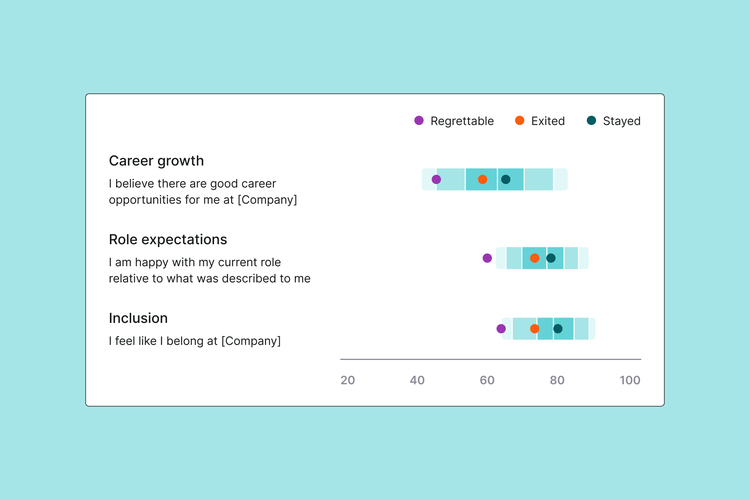What is people science?
Discover new ways to make work better
People science is the practice of examining how people think, feel, behave, and learn – and it’s embedded into everything we do for you.

Our approach
We work with you to identify the best way to ask survey questions, create strategies for collecting feedback, and sift through data to make impactful decisions. We also educate on the principles of telling stories with data and linking employee feedback data to key business metrics.
Evidence-backed
We combine peer-reviewed literature with field experience and customer insights to craft recommendations that acknowledge the complexity of contemporary workplaces. We know that even the slightest ambiguity can derail survey results, so a rigorous approach is vital.
Always innovating
We make hypotheses, test them, learn, and iterate to bring you the best methodologies for collecting data you can trust.
Positive growth mindset
We believe in approaches that will engage and develop your people to improve business outcomes.
Thought partnership
Our customers enjoy unrivaled support, education, and upskilling from some of the world’s brightest minds in people science.
A window into regrettable attrition
If you have low scores on your Engagement survey, it’s natural to question who the unfavorable results are coming from. Our research indicates they might be from the very employees you most want to keep!

Our nimble, in-house team listens to your company’s goals
Culture Amp helps you apply the latest learnings from industrial/organizational psychology, organizational development, and data science to improve your business.
Data you can use
We analyze millions of responses – worldwide, across industries – feeding insights from top-performing companies back into our platform to help you collect meaningful data and enact positive change.
Founded on people science
At Culture Amp, people science has been embedded into the platform from the start. Our in-house experts blend industrial/organizational psychology and data science with real business insights and user empathy to understand and meet the multifaceted needs of our customers.
A world-class team
With PhDs in everything from industrial/organizational psychology to machine learning, our expansive, interdisciplinary team has decades of industry experience, previously holding roles at Deloitte, Google, Mercer, Korn Ferry, and other leading organizations.
Diverse insights
Our people scientists specialize in behavioral psychology, occupational health, organizational development, diversity and inclusion, business analytics, change management, and more. This diversity gives our team breadth and strength, helping us forge new paths to get you the best results.